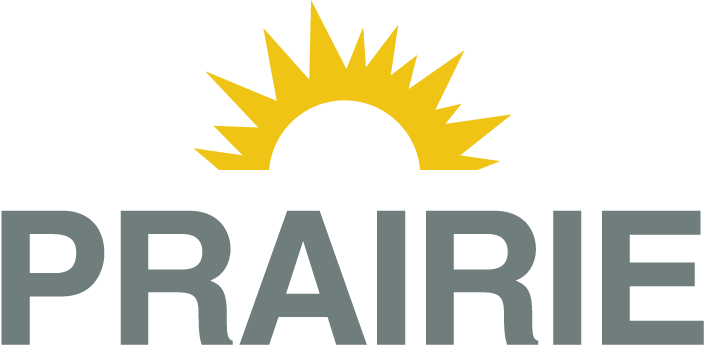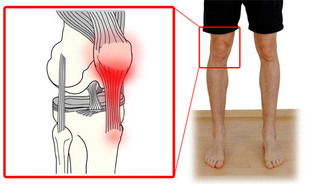A few of the many names anterior knee pain can commonly be labeled are…Osgood Schlatter Disease, patellar tendonitis, jumpers knee, runners knee, patellofemoral syndrome, fat pad impingement, patellar tendon strain and the list goes on.
Anterior Knee Pain ….what is it!?
Anterior knee pain has become a general term for a good deal of issues/conditions/injuries that are potentially causing the discomfort with your knee. As an individual in the athletic population you have more than likely experienced some sort of this before, during or after exercise. Due to the nature of the mechanics of your knee, general pain could lead to much bigger and more concerning issues if left unmonitored. If pain or discomfort is at all inhibiting your athletic goals, make sure to see your licensed medical professional for further action and to get you back on track to your personal and professional goals.
Some of the options given to you to help reduce this discomfort will include physical therapy or rehab, rest, anti-inflammatories, icing, injections, or even the thought of surgery depending on the severity of the issue.
So why does this type of pain come about? Well for starters, patellar tendonitis, the most common anterior knee pain is an overuse or over-training injury that is caused by swelling from very small tears in the patellar tendon. You will most often see this in sports that involve a great deal of jumping and running. This type of injury also comes about due to muscle imbalances, improper landing or jumping techniques, a running form/style that is not biomechanically sound, and even improper lifting form. In the end, if these early signs of pain aren’t rectified, you allow yourself to potentially fall victim to the dreaded “rest/recovery period”, which no athlete wants to hear.
So what should you do to prevent or treat this pain when it comes about? First off, complete a much better warm up prior to activity. Take that extra time before your practice, workout class, or competition begins so that your body is fully ready for that type of stress. This may include dynamic movements, foam rolling, or self muscle massage to suggest a few. Secondly, modifying your activities to what doesn’t cause pain. Reducing the total number of jump squats that you do or reducing the total time you do the activity that is the main culprit will aid in diminishing your pain. Thirdly, work on your imbalances. In today’s culture we are constantly sitting, which deactivates certain muscle groups while allowing others to get tight and very restrictive. For a good percentage of adolescents their hip flexors and low back muscles are very strong and tight while their glutes and abdominals can’t work properly causing a movement dysfunction at their pelvic level. Moving down the chain, the majority of younger athlete’s quads are the strongest part of their body, which is OK, but their hamstrings lack the adequate strength and mobility to compete with those strong and tight quads and IT bands. Finally, ice, heat and anti-inflammatory medication prescribed by your physician can be your friends. Ice can reduce the discomfort you feel and also help with an inflammation you get post activity, external heat (electric hot pack) can be used prior to your warm-up and activity to jump start that process, and anti-inflammatories can help reduce the pain and swelling you feel or see pre and post activity.
At the end of the day, the majority of us athletes will have some type of anterior knee pain or discomfort during our careers. As long as you get working on your imbalances, complete a much better warm up, and listen to your body during and after a long season, you’ll be better equipped to take on the constant challenges that we as athletes face today.
Anterior knee pain has become a general term for a good deal of issues/conditions/injuries that are potentially causing the discomfort with your knee. As an individual in the athletic population you have more than likely experienced some sort of this before, during or after exercise. Due to the nature of the mechanics of your knee, general pain could lead to much bigger and more concerning issues if left unmonitored. If pain or discomfort is at all inhibiting your athletic goals, make sure to see your licensed medical professional for further action and to get you back on track to your personal and professional goals.
Some of the options given to you to help reduce this discomfort will include physical therapy or rehab, rest, anti-inflammatories, icing, injections, or even the thought of surgery depending on the severity of the issue.
So why does this type of pain come about? Well for starters, patellar tendonitis, the most common anterior knee pain is an overuse or over-training injury that is caused by swelling from very small tears in the patellar tendon. You will most often see this in sports that involve a great deal of jumping and running. This type of injury also comes about due to muscle imbalances, improper landing or jumping techniques, a running form/style that is not biomechanically sound, and even improper lifting form. In the end, if these early signs of pain aren’t rectified, you allow yourself to potentially fall victim to the dreaded “rest/recovery period”, which no athlete wants to hear.
So what should you do to prevent or treat this pain when it comes about? First off, complete a much better warm up prior to activity. Take that extra time before your practice, workout class, or competition begins so that your body is fully ready for that type of stress. This may include dynamic movements, foam rolling, or self muscle massage to suggest a few. Secondly, modifying your activities to what doesn’t cause pain. Reducing the total number of jump squats that you do or reducing the total time you do the activity that is the main culprit will aid in diminishing your pain. Thirdly, work on your imbalances. In today’s culture we are constantly sitting, which deactivates certain muscle groups while allowing others to get tight and very restrictive. For a good percentage of adolescents their hip flexors and low back muscles are very strong and tight while their glutes and abdominals can’t work properly causing a movement dysfunction at their pelvic level. Moving down the chain, the majority of younger athlete’s quads are the strongest part of their body, which is OK, but their hamstrings lack the adequate strength and mobility to compete with those strong and tight quads and IT bands. Finally, ice, heat and anti-inflammatory medication prescribed by your physician can be your friends. Ice can reduce the discomfort you feel and also help with an inflammation you get post activity, external heat (electric hot pack) can be used prior to your warm-up and activity to jump start that process, and anti-inflammatories can help reduce the pain and swelling you feel or see pre and post activity.
At the end of the day, the majority of us athletes will have some type of anterior knee pain or discomfort during our careers. As long as you get working on your imbalances, complete a much better warm up, and listen to your body during and after a long season, you’ll be better equipped to take on the constant challenges that we as athletes face today.


